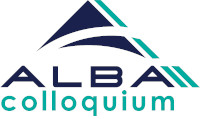- https://www.cells.es/en/media/events/alba-public-events/alba-ii-colloquium-3-multilength-scale-imaging-with-cryo-em
- ALBA II Colloquium #4 - "Multilength scale imaging with cryo-EM"
- 2021-02-22T11:00:00+01:00
- 2021-02-22T12:00:00+01:00
- Multilength scale imaging with cryo-EM, by Hartmut Luecke (Center for Molecular Medicine Norway)
- What
- events
- When
- Feb 22, 2021 from 11:00 AM to 12:00 PM (Europe/Madrid / UTC100)
- Where
- ALBA (virtual event by Zoom)
- Contact Name
- ihernandez@cells.es
- Web
- Visit external website
- Add event to calendar
-
 iCal
iCal
Abstract
I will briefly discuss the various 3D structure determination techniques employed by structural biologists for structure-function studies of macromolecules. I will then highlight the special roadblocks one encounters when working with membrane proteins. Finally, I will present a specific project from my lab:
Helicobacter pylori chronic infection:
The evil duo of a pH-gated urea channel and a cytoplasmic Urease
Helicobacter pylori’s proton-gated plasma membrane urea channel and cytoplasmic urease are essential for the survival of this carcinogen the human stomach. The channel is closed at neutral pH and opens at acidic pH to allow the rapid access of urea to cytoplasmic urease. Urease hydrolyzes urea into 2 NH3 and CO2, neutralizing protons and thus buffering the cytoplasm even in gastric juice when the pH is below 2.0. We determined the crystal structure of the channel, revealing six protomers assembled in a hexameric ring surrounding a central bilayer plug of ordered lipids. Each protomer encloses a channel formed by a twisted bundle of six transmembrane helices. The bundle defines a previously unobserved fold comprising a two-helix hairpin motif repeated three times around the central axis of the channel, without the inverted repeat of mammalian-type urea transporters. Both the channel and the protomer interface contain residues conserved in the AmiS/UreI superfamily, suggesting the preservation of channel architecture and oligomeric state in this superfamily. Predominantly aromatic or aliphatic side chains line the entire channel and define two consecutive constriction sites in the middle of the channel. Mutation of Trp153 in the cytoplasmic constriction site to Ala or Phe decreases the selectivity for urea in comparison with thiourea, suggesting that solute interaction with Trp153 contributes specificity. The structure suggests a new model for the permeation of urea and other small amide solutes in prokaryotes and archaea. Follow-up microsecond-scale unrestrained molecular dynamics studies provide a detailed mechanism of urea and water transport by the channel. More recently, we have determined the structure of the 1.1 MDa urease with various bound inhibitors to resolutions up to 1.68 Å using cryo electron microscopy. Inhibitor discovery against both targets is in progress.
References
Strugatsky, D., McNulty, R.M., Munson, K., Chen, C.-K., Soltis, S.M., Sachs, G., Luecke H. “Structure of the proton-gated urea channel from the gastric pathogen Helicobacter pylori” (2013) Nature 493, 255–258.
Luecke, H. & Sachs, G. “Helicobacter pylori’s Achilles’ Heel” (2013) Immuno-Gastroenterology 2, 76.
McNulty, R., Ulmschneider, J.P., Luecke, H., Ulmschneider, M.B. ”Mechanisms of molecular transport through the urea channel of Helicobacter pylori” (2013) Nature Communications 4, 2900.
Cunha, E.S., Chen, X., Sanz Gaitero, M., Mills, D., Luecke, H. “Cryo EM Structure of Helicobacter pylori inhibitor-bound urease at 2.0 Å resolution.” (2021) Nature Communications 12, 230. https://rdcu.be/cdnuc

About ALBA II Colloquium
The series ALBA II Colloquium, addressed to the scientific user's community of synchrotron radiation, is aimed at inspiring and promoting fruitful ideas and information exchange about the future development of ALBA II facility.




